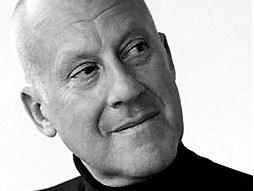The most interesting ideas in architecture right now
Architecture expos are often futurist fantasias of design -- but this year's Venice Architecture Biennale imagines how humanity's first art can house (and treat) us all better.
Continue reading
From museums and banks to airports and bridges, from apartment buildings to the Reichstag, in the past 35 years Lord Norman Foster's beautiful and efficient designs have dramatically changed the character of cities and landscapes around the world. His major projects include Beijing Airport, Millau Viaduct in France, 30 St Mary Axe (known as The Gherkin), the Great Court at the British Museum, the Hearst Headquarters in New York and the Museum of Fine Arts, Boston. More recently he designed Apple Park in California, Bloomberg's European Headquarters in London, the Comcast Tower in Philadelphia and the Norton Museum of Art in Florida. In 2019 he was appointed the architect for JP Morgan's new headquarters in New York.
A common philosophy connects his projects, starting with social responsiveness and the use of natural resources, such as ventilation and light. Some of Foster's work has sparked controversy (such as his pyramid in Astana, Kazakhstan), but he has never ignored a chance to rewrite the rules of architecture, be it by tackling audaciously huge construction projects or by designing wind turbines and partly solar-powered electric buses.
Architecture expos are often futurist fantasias of design -- but this year's Venice Architecture Biennale imagines how humanity's first art can house (and treat) us all better.
Continue readingFrom the DLD Conference in Munich: Architect Norman Foster discusses his own work to show how computers can help architects design buildings that are green, beautiful and “basically pollution-free.” He shares projects from throughout his career, from the pioneering roof-gardened Willis Building (1975) to the London Gherkin (2004). He also comments on two upcoming megaprojects: […]
Continue reading